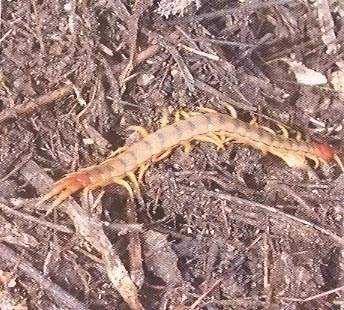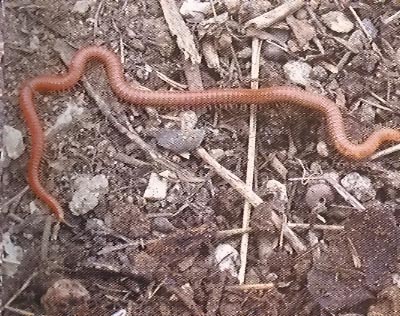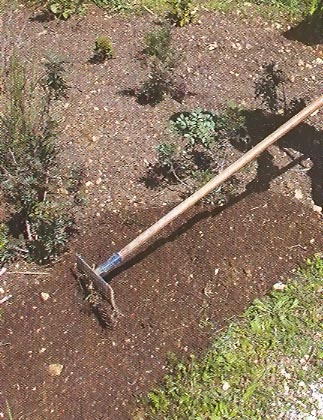 |
||
|
|
||
|
|
||
 |
Soil: Digging in the Dirt
Athens New |
|
| The ideal garden soil is well-drained, yet retains a reasonable amount of moisture. It is fertile, with clay minerals and organic matter holding a reservoir of nutrient elements, readily available to nourish plants. Aerated by earthworms, it is full of soil bacteria and small invertebrates. It is easy to work and dark in colour, owing to the high organic content. With all these ingredients in place, plants flourish, needing little more than an annual top-up of compost or manure. |
||
| Most gardeners are probably more interested in what's going on above ground than below it: after all, this is the part that bears the fruits of our labour. However, understanding soils is very important in knowing how to provide plants with the best growing conditions. Soil and climate, together with the knowledge of the gardener, are what determines which plants just survive in a garden and which really thrive. The nature of the soil - and its relationship with roots - is fundamental to the functioning of almost all terrestrial plants. Real soil is not an inert material, not just a moist, fertile foothold for plants (although, unfortunately this is true of many of the world's soils now, drenched as they have been with herbicides and fertilizers over the years). Natural soil is a vastly complex ecosystem, teeming with life. Just one spoonful could contain millions of microbes, algae, bacteria and miles of fungal filaments that break down all manner of living and dead matter. Below the surface, worms and beetles decompose fallen leaves and decaying animals. A few shovelsful could harbour a thousand different species, most of which live in the particles of topsoil. All this activity only can occur under optimum conditions, if the soil is aerated, moist and warm, with plenty of organic material for them to work on. |
 Earthworm (Lummbricus terrestris)  Centipede(Scolopendra cingulata)  Millipede (Haplophilus subterraneus) |
|
|
The decomposer ecosystem varies from one locality to the next In "new" ground, arthropods - such as insects. arachnids and crustaceans - usually dominate the soil fauna first, later giving way to worms; in very dry climates, ants and termites replace worms. Bacteria, fungi and yeasts are present almost everywhere and often are first on the scene when a dead leaf, shed skin or animal dropping appears. In each decomposition, there is great specialization and many chemical pathways: for example, the decay of pine needles involves an orderly succession of at least ten types of fungi, each attacking a different element of the needles. |
||
|
The earth in your garden probably consists of about 50 percent solids (particles of clay, silt sand and organic matter) and 50 percent 'space' (ideally equal parts water and air). This permits circulation of oxygen and carbon dioxide and provision of adequate moisture, but also drainage. Air is vital to plant roots for respiration. That's why poorly drained soils are fatal to many species: the air space is filled with water. Drought conditions can be equally disastrous because of the opposite effect. |
 Preparing the soil properly pays off in the long run |
|
|
1. Sandy soils, often found in coastal regions, are easily worked, quick to warm up in spring, well-aerated and well-drained. However, this latter strength also is a problem, as they do not retain moisture well. Nutrients too are quickly washed away. These troubles can be solved with the addition of wellrotted manure, compost or a loamy soil. 2. At the other extreme is clay, slow to warm after winter and difficult to work. Usually there are only short periods in the autumn and spring when cultivation is possible. Drying to a crisp with deep cracks in summer and waterlogged in winter, these sods are prone to compaction problems and poor air circulation. On the upside, high mineral levels often are present, giving plants many of their requirements for healthy growth. Once again, the addition of organic matter improves drainage and makes the soils easier to manage. 3. Somewhere between the two (and best of the general types) is loamy soil, with equal proportions of sand, silt and clay, as well as some organic matter. It is usually welldrained, but moist, due to high levels of humus. Consequently it has a generous measure of nutrients and adequate air circulation. Loamy soil warms up easily and is pleasant to work. To maintain this fortunate state of affairs, it is still advisable to add compost every year. Tired soils have little life. In Greece, the land is notoriously dry, stony and shallow, having suffered from over-grazing, over-cultivation and fire, all contributing to serious degradation. Combined with exposure to sun, wind and torrential winter rainfall, the result is a soil poor in organic matter. High levels of solar radiation mean that any organic materials present are broken down very quickly and the leaching of nutrients is also significant. High levels of salts often accumulate in the topsoil, due to excessive evaporation, which make life difficult for many plants. Most local soils are alkaline, especially in low rainfall areas. This too can cause a problem, reducing the nutrients available to plants and creating knock-on troubles; particularly pronounced in Greece is the problem of chlorosis (yellowing of leaves) due to lack of iron. For all these reasons, it now becomes clear why the annual addition of organic matter is so vital to improve the soil in your garden. |
||
(Posting date 29 August 2006) HCS readers can view other excellent articles by this writer in the News & Issues and other sections of our extensive, permanent archives at the URL http://www.helleniccomserve.com./contents.html
All articles of Athens News appearing on HCS have been reprinted with permission. |
||
|
||
|
2000 © Hellenic Communication Service, L.L.C. All Rights Reserved. http://www.HellenicComServe.com |
||

